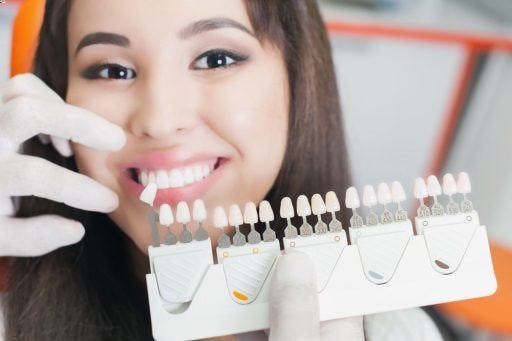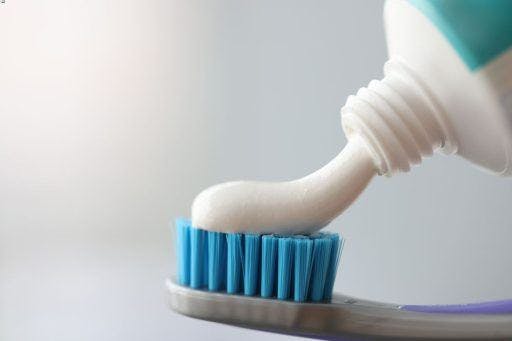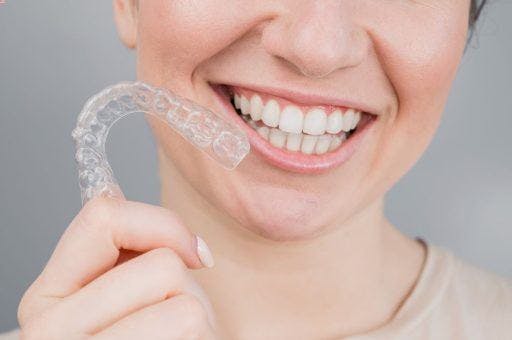In many cultures, white teeth are markers of healthiness, desirability, and affluence. They’re a beauty standard that most people will go to great lengths to achieve. Case in point: the global teeth whitening market had a US$6.9 billion valuation in 2021, according to a report published in Grand View Research. Whitening toothpaste, given its widespread availability and affordability, accounts for 33% of the market share. That’s billions spent on these at-home whiteners.
Whitening toothpaste promises to give you sparkling pearly whites with consistent use. The best part is you can get those results all by yourself. But you have to wonder: how exactly do these miracle pastes make that magic happen? Do they work? Answers to those questions (and more!), coming right up.
A Basic Guide to Teeth Whitening

Before diving into the specifics of whitening toothpaste, it helps to know some general truths about teeth whitening. The term refers to different methods of bleaching teeth, which depends on the type of discolouration you want to treat. The American Dental Association (ADA) distinguishes between extrinsic (outside of the tooth) and intrinsic (inside of the enamel or dentin) stains.
The former is “primarily associated with environmental factors or individual behaviours, such as tobacco use, exposure to metal salts, or the consumption of highly pigmented foods or beverages.” Meanwhile, the latter “can arise due to systemic causes such as genetic disorders […] or local factors during tooth development […].” The ADA also lists ageing, antibiotic use, and dental caries as common causes.
Lightening intrinsic stains involves “a chemical reaction that changes the [tooth’s colour],” which is usually impossible with at-home treatments. If you’re dealing with this type, you’ll want to seek the help of a regulated dental professional. They’ll combine high concentrations of bleaching ingredients, such as carbamide and hydrogen peroxide, to break down stains. Unfortunately, using these harsh ingredients may cause adverse repercussions, including teeth sensitivity and gingival irritation.
These side effects are usually mild and temporary. However, if you’re currently addressing misalignment with clear aligners, it may not be ideal to undergo professional whitening. As the Australian Society of Orthodontists (ASO) cautions, “Teeth and gums may be more sensitive immediately following orthodontic treatment.” They advise “waiting a few months post-treatment to begin any significant teeth whitening” for a more “safe and comfortable” process.
After a thorough assessment, your dentist might administer a bleaching gel in-office or prescribe it for home use. Laser teeth whitening is another option. In any case, these professional methods won’t work overnight. They require more than one session to deliver the bright-white smile most people are after, which can be costly. That’s why many opt for more accessible solutions like toothpaste, even if they only work on certain stains.
What You Need to Know About Whitening Toothpaste

That’s right: the answer to the billion-dollar question, “Does whitening toothpaste work?” is yes – if the stains are on the surface. According to the ADA, this toothpaste can “effectively reduce […] a wide range of extrinsic stains.” These stains typically develop from sticky plaque that takes on the colour of certain foods, drinks, and other items, like coffee, red wine, and cigarette residue. You can clean off these “surface” stains through basic oral hygiene.
A caveat: when plaque turns into calculus, you’ll need professional intervention to effectively remove the staining. Daily brushing and flossing will help keep buildup at bay, which results in less noticeable discolouration. Using a toothpaste that whitens teeth can also help, provided it contains the right combination of ingredients.
What are the components of toothpaste for whitening?
In an article for Teeth.org.au, Dr Elizabeth Milford breaks down how teeth whitening works with toothpaste. She lists abrasives, peroxides, and stain blockers as key components.
Mild abrasives like silica and calcium carbonate “help remove dental plaque and stains without damaging the teeth.” Peroxides are much harsher on teeth, so the amount in toothpaste is “kept quite low.” If you experience sensitivity after brushing with certain formulas, check if it contains peroxide – that might be the reason. Lastly, stain blockers keep colours from staining the plaque in the first place.
Can you use whitening toothpaste during aligner treatment?

Compared to professional-grade bleaching, the ASO classifies whitening toothpaste as a mild teeth-whitening practice. This makes it more suitable for use during aligner treatment. So, it’s a viable option if you’re undergoing aligner therapy with ClearCorrect and are eager to whiten your teeth simultaneously. To err on the side of caution, check with your treating doctor before trying it out.
When will whitening toothpaste work?
It can take weeks or months to see results after using specialised toothpaste. You’ll also need to abstain from consuming anything that increases stains for those effects to last longer. Even then, you can’t expect a dramatic change, especially if your issues go deeper than the surface.
If your goal is a bright Hollywood-ready smile, you still need to go to the pros. That’s beyond what any over-the-counter whitening toothpaste can achieve. So, work with your dentist to figure out what’s attainable. In the meantime, focus on keeping your teeth healthy and strong – even if they’re not blindingly white. A bit of staining is nothing to be ashamed of!
References:
American Dental Association. (n.d.). Whitening. ada.org.
Australian Dental Association. (2023). 3 ways whitening toothpastes work. Teeth.org.au.
Australian Society of Orthodontics. (n.d.) Can you whiten your teeth while wearing clear aligners? Orthodontics Australia.
Grand View Research. (n.d.). Teeth Whitening Market Size, Share & Trends Analysis Report By Product (Whitening Toothpaste, Whitening Gels & Strips, Light Teeth Whitening Device), By Distribution Channel, By Region, And Segment Forecasts, 2022 – 2030. grandviewresearch.com
National Health Services (UK). (2022a, May 5). Teeth whitening. nhs.uk.



